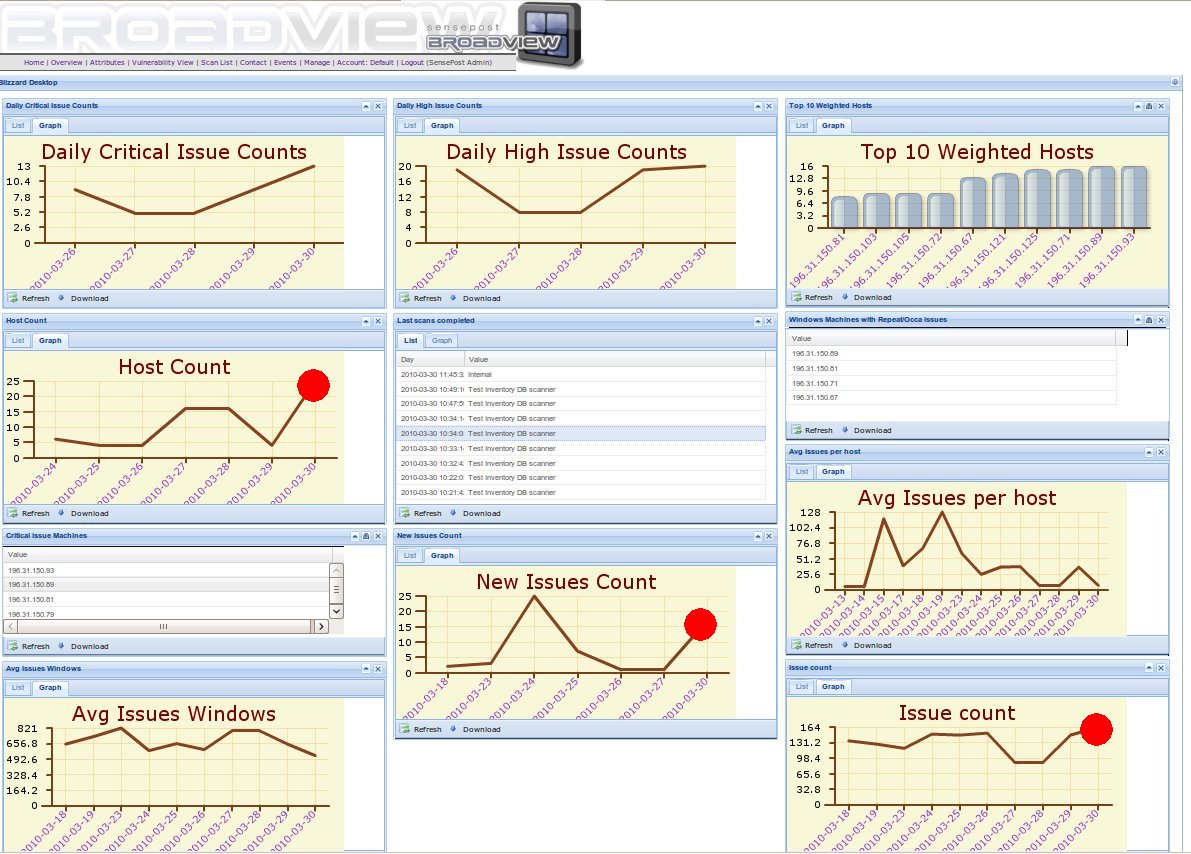Ever since Ron Gula’s RiskyBusiness talk #142 about their Nessus philosophy, I decided to come out of the closet and share with our readers the work we do in the vulnerability management field. [Ed: If you don’t listen to Risky Business then, as we say in South Africa, eish.] Ron explained that with Nessus they aim to give users a tool that can be used for monitoring and auditing – not enforcing. The “sed quis custodiet ipsos custodes” mantra comes to mind. For 9 years now we have been building two vulnerability management solutions named HackRack (for hosted, external scanning) and BroadView (for internal scanning) and it was especially HackRack that has claimed the limelight. The runt of the litter has always been BroadView, but alas (luckily?), no more.
We decided a while ago to invest our new ideas and technology in BroadView, and when that matured and stabilized, use the new BroadView as a base for new HackRack and HackRack PCI services.
And that process is nicely on track.
I mean, just look at this interface. The Blizzards page will allow BV users to get up to date stats about their environment but also allow them to quickly grasp the actual state of affairs on their network. Blizzards are visual sql queries that display averaged or calculated results of vulnerability scans as well as collected attributes. In the example below, one can quickly appreciate the impact of adding a batch of new machines to a scan, and the resulting impact on the New Issue count blizzard.
We don’t see BV as just another vulnerability scanner. Its a data collector of note. It does not just scan,it also collects. From every networked device that is probed, attributes are collected that range from regular basic info such as IP addresses and operating system values, to machines without SMS agents and WebDAV directories on HTTP services.
In the weeks and months to come we will share with you the trial and tribulations to eventually bring to light BroadView v4, Final Release. We will share with you our frustration and jubilations in successfully executing intensity scans on virtualised hardware, how to mine for installed software on OS X and appreciating the amazing reduction in bandwidth utilisation by switching from SOAP to Thrift.
Well, I am off to go watch one our guys participate in a televised panel discussion – and at the same time figuring out if there are any advantages in being able to interface BroadView with our Saeco coffee machine …

